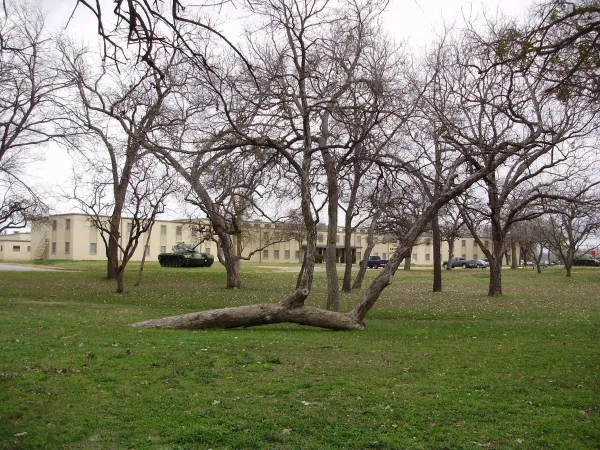Showing the Way: Indian Marker Trees



Published July 2017, By STEVE HOUSER

The California Crossing Indian Marker Tree, located on the grounds of the National Guard Armory in Dallas, likely signaled a low-water crossing point along the Trinity River. All photographs provided by Steve Houser.
American Indians once used trees like highway signposts, bending and securing young saplings to mark important landmarks and resources. The Texas Historic Tree Coalition is working to identify, document, and officially recognize these culturally modified trees, before they disappear from the landscape - and the state's historical record.
An Indian marker tree is one that was purposely bent over and secured in that position when it was small, eventually taking on an unusual appearance as it matured. Some tribes used binding ties made with a thong of animal hide, which is where the term "thong tree" originated. The Comanche, who claimed areas of North, Central, and West Texas as tribal territory, secured a sapling with rope made of yucca and weighted with rocks. According to Comanche Nation Tribal Historic Preservation Officer Jimmy W. Arterberry, plant fiber was more widely used because animal hide was a valuable resource.
To read the full article, please download the PDF.
